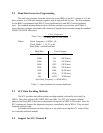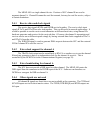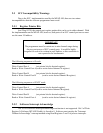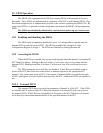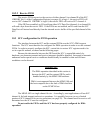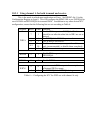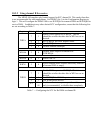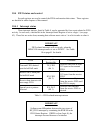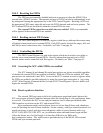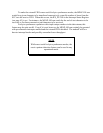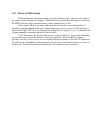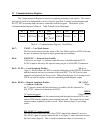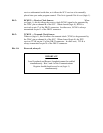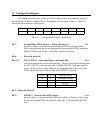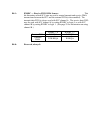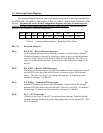
10.4.2 Resetting the FIFOs
The FIFOs are automatically disabled and reset at powerup or when the MPAP-100 is
inserted into a PCMCIA socket. The transmit and receive FIFOs can also be independently reset
by setting and clearing the appropriate bits in the FIFO Control Register. Resetting a FIFO sets
the appropriate FIFO empty status bit and resets the FIFO's internal read and write pointers. The
SCC's internal FIFOs are not affected when the external FIFOs are reset.
The external FIFOs cannot be reset while they are enabled! FIFO reset commands
will be ignored if the external FIFOs are enabled.
10.4.3 Reading current FIFO status
The FIFO Status Register is a read-only register which always indicates the current status
of both the transmit and receive external FIFOs. Each FIFO can be checked for empty, full, and
half-full (or more) status at any time. For details, see Table 12 on page 44.
10.4.4 Controlling the FIFOs
The FIFO Control Register is a read-write register which can be used to reset either or
both the receive and transmit external FIFOs. Receive pattern detection and receive FIFO
timeout modes are also controlled with this register. For details, see Table 13 on page 45.
10.5 Accessing the SCC while FIFOs are enabled
The SCC channel A and channel B control port registers are always accessible regardless
of whether the external FIFOs are enabled or disabled. While the FIFOs are enabled, SCC data
port accesses are redirected to the FIFOs. Access to the SCC's transmit or receive registers while
the FIFOs are enabled is possible indirectly by using the control port and register 8. Any writes
of SCC Write Register 8 (transmit buffer) or reads of SCC Read Register 8 (receive buffer) will
bypass the external FIFOs.
10.6 Receive pattern detection
The external FIFOs are most useful in bit-synchronous operational modes because the
SCC can generate a Special Condition interrupt when the closing flag of a bit-synchronous frame
is received. This allows the SCC to run with per-character receive interrupts disabled while
DMA transfers occur between the SCC and external FIFOs.
Byte-synchronous modes such as bisync, however, do not benefit from such a hardware
assist for detecting the end-of-frame condition. On the contrary, with byte-oriented protocols it is
usually necessary to check each byte received against a table of special function codes (e.g.
SYNC, PAD, SDI, STX, EDI, ETX, etc.) to determine where data and frames begin and end.
Unless the frames are of a fixed length, it is therefore difficult to use DMA with
byte-synchronous modes. This would seem to preclude the use of the MPAP-100's external
FIFOs with byte-oriented protocols.



